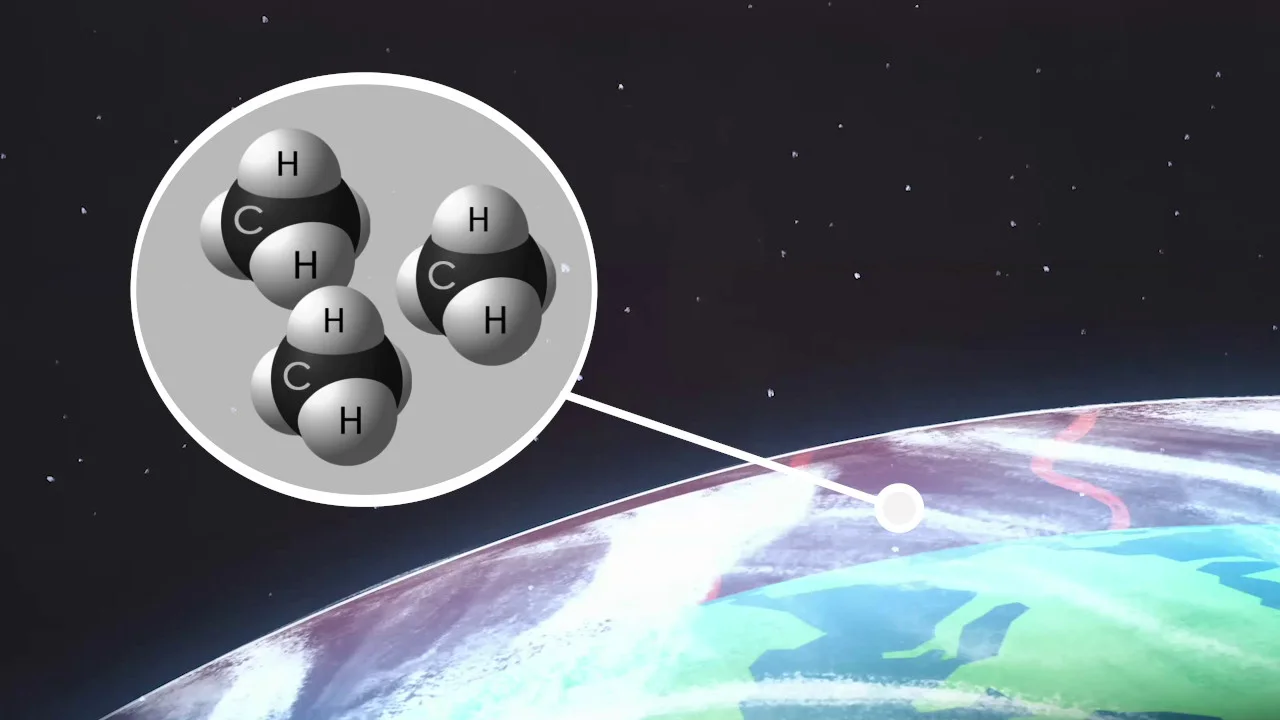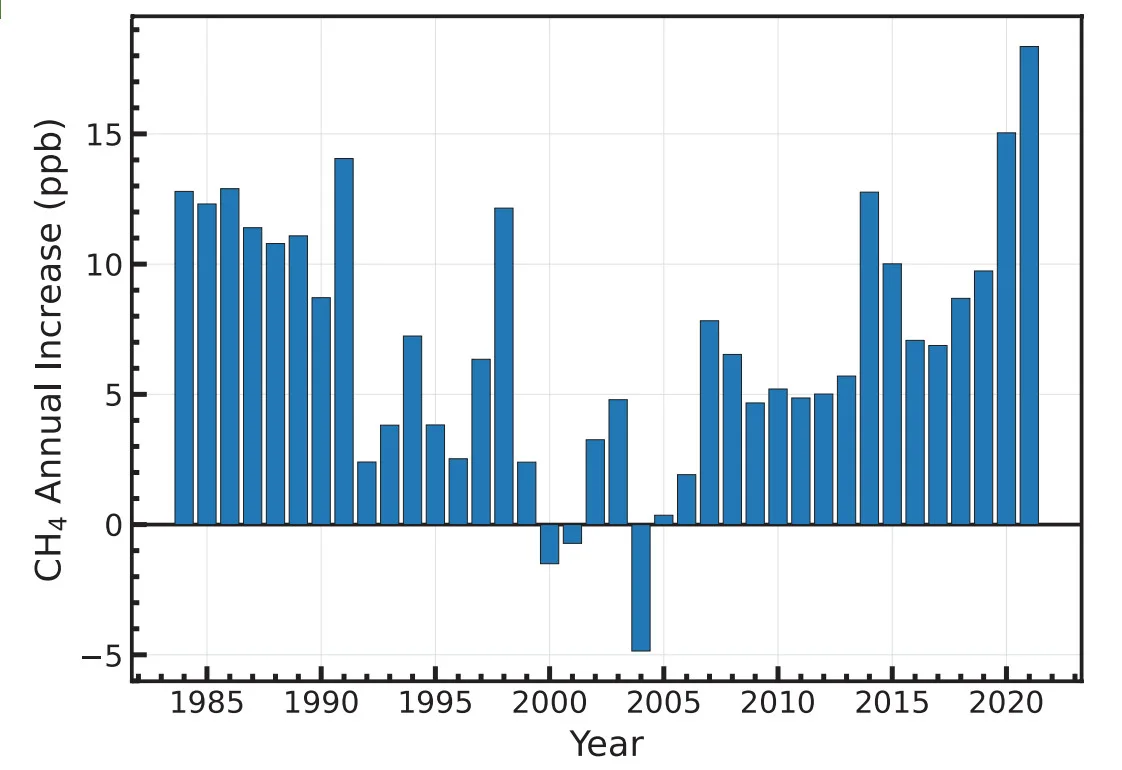
Methane’s largest increase ever recorded last year, says WMO report
Experts stress that we need to implement strategies to tackle these emissions without delay.
Ahead of the upcoming COP27 climate meeting in November, a new report shows that, from 2020-2021, methane concentrations in the atmosphere saw the largest year-to-year increase recorded in nearly 40 years.
On Wednesday, the World Meteorological Organization (WMO) released their Greenhouse Gas Bulletin for 2021, and as expected, the news is not good. The atmospheric concentration of the three main greenhouse gases — carbon dioxide, methane, and nitrous oxide — all increased last year. Additionally, methane saw its single largest annual increase since record keeping began back in 1984.
"WMO's Greenhouse Gas Bulletin has underlined, once again, the enormous challenge — and the vital necessity — of urgent action to cut greenhouse gas emissions and prevent global temperatures rising even further in the future," WMO Secretary-General Prof. Petteri Taalas said in a statement.
"The continuing rise in concentrations of the main heat-trapping gases, including the record acceleration in methane levels, shows that we are heading in the wrong direction," he added.

This graph shows the annual increase in global methane (CH4) concentrations, for each year from 1984 through 2021. Each bar represents how much the concentration increased compared to the previous year. While 2020 previously set a record, with an annual increase of 15 parts per billion (ppb) over 2019 levels, 2021 broke that record with a yearly increase of roughly 18 ppb. (WMO)
According to the WMO, the exact reason for this methane increase is not currently known. It is most likely due to a combination of natural and human-linked factors.
"Carbon dioxide concentrations in 2021 were 415.7 parts per million (ppm), methane at 1908 parts per billion (ppb) and nitrous oxide at 334.5 ppb," the WMO stated in a press release on Wednesday. "These values constitute, respectively, 149 per cent, 262 per cent and 124 per cent of pre-industrial levels before human activities started disrupting natural equilibrium of these gases in the atmosphere."
While these increases are cause for concern, each of these three greenhouse gases carries a different level of urgency.
As we tackle the climate crisis, carbon dioxide is still the main problem. Of all the major greenhouse gases, it is the most abundant in our atmosphere. It also remains in our atmosphere for a long period of time. As such, it accounts for around two-thirds of the total warming we have experienced since the 1800s. If we look at just the last 10 years, the contribution from CO2 rises to roughly 80 per cent.
"As the top and most urgent priority, we have to slash carbon dioxide emissions which are the main driver of climate change and associated extreme weather, and which will affect climate for thousands of years through polar ice loss, ocean warming and sea level rise," said Prof. Taalas.
Nevertheless, seeing a nearly 1 per cent annual increase in methane concentrations raises alarms.
There is far more carbon dioxide in the atmosphere than there is methane — around 216 times as much, to be more exact. At the same time, though, molecule-to-molecule, methane is a far more potent greenhouse gas than carbon dioxide.
Comparing the relative heat-trapping potential of the two gases is a challenge, because a carbon dioxide molecule can remain in the atmosphere for between 300 and 1,000 years, while a methane molecule tends to be removed or broken down in 10-20 years. Still, in its short time in the atmosphere, each molecule of methane can trap over 80 times more heat than a CO2 molecule.
So, the last thing we want to see is big spikes in the annual concentration of methane gas.
"There are cost-effective strategies available to tackle methane emissions, especially from the fossil fuel sector, and we should implement these without delay," said Prof. Taalas.
"We need to transform our industrial, energy and transport systems and whole way of life," Prof. Taala concluded. "The needed changes are economically affordable and technically possible. Time is running out."
(Thumbnail image courtesy NASA's Goddard Space Flight Center)







